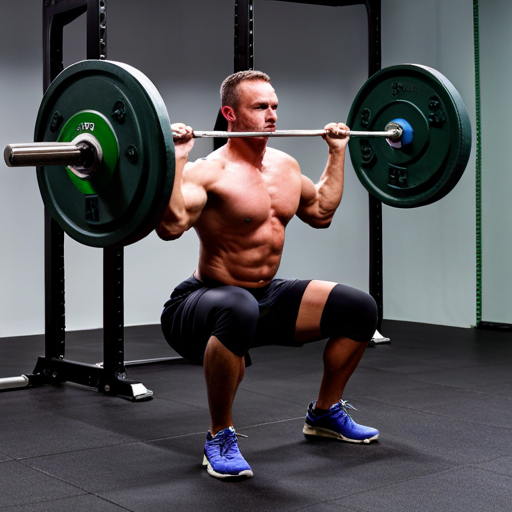
When it comes to building muscle, one of the most effective tools you can use is a barbell. Not only does it provide a versatile and challenging workout, but it also allows you to target multiple muscle groups at once. In this blog post, we will explore the best exercises for building muscle with a barbell, giving you a comprehensive guide to help you achieve your fitness goals. Whether you are a beginner or an experienced lifter, these exercises will help you maximize your muscle growth and strength.
Compound Exercises
Compound exercises are a key component of any muscle-building routine. These exercises involve multiple joints and muscle groups, allowing you to lift heavier weights and stimulate more muscle fibers. Here are some of the best compound exercises you can do with a barbell:
1. Squats
Squats are often referred to as the king of all exercises, and for good reason. They primarily target the muscles in your lower body, including your quadriceps, hamstrings, and glutes. Additionally, squats also engage your core muscles, providing a well-rounded workout. To perform a squat with a barbell, place the barbell across your upper back and shoulders, keeping your feet shoulder-width apart. Lower your body by bending your knees and pushing your hips back, keeping your chest up and maintaining a neutral spine. Drive through your heels to return to the starting position.
2. Deadlifts
Deadlifts are another highly effective compound exercise that targets multiple muscle groups, including your back, glutes, hamstrings, and core. They also help improve your grip strength and overall power. To perform a deadlift with a barbell, stand with your feet hip-width apart and the barbell centered over your feet. Bend at your hips and knees, keeping your back flat and your chest up. Grip the barbell with an overhand grip, slightly wider than shoulder-width. Drive through your heels, extend your hips, and pull the barbell up along your legs until you are standing upright. Lower the barbell back down with control.
3. Bench Press
The bench press is a classic exercise that primarily targets your chest muscles, but also engages your shoulders and triceps. It is an excellent compound movement for developing upper body strength and muscle mass. To perform a bench press with a barbell, lie flat on a bench with your feet firmly planted on the ground. Grip the barbell slightly wider than shoulder-width apart and lower it to your chest, keeping your elbows tucked and your wrists straight. Push the barbell back up to the starting position, fully extending your arms.
4. Overhead Press
The overhead press, also known as the military press, targets your shoulder muscles, as well as your triceps and upper back. It is a compound exercise that helps develop upper body strength and stability. To perform an overhead press with a barbell, start with the barbell racked at shoulder height. Grip the barbell slightly wider than shoulder-width apart and press it overhead, fully extending your arms. Lower the barbell back down to the starting position with control.